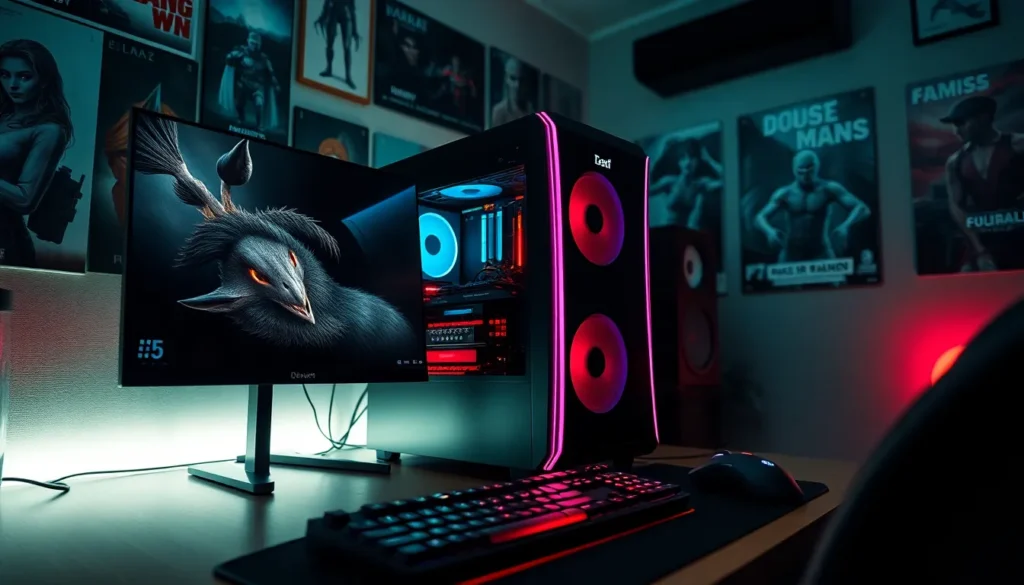Table of Contents
ToggleIn the ever-evolving world of fashion, keeping up with trends can feel like chasing a runaway train. One minute, everyone’s obsessed with oversized blazers, and the next, it’s all about the return of low-rise jeans—yikes! Fashion trend analysis isn’t just for the runway elite; it’s for anyone who wants to stay stylish without looking like they just raided their grandma’s closet.
Overview of Fashion Trend Analysis
Fashion trend analysis focuses on identifying and interpreting shifts in style preferences over time. Changes in consumer behavior, societal influences, and cultural events often drive these trends. Tracking these shifts aids brands, designers, and consumers in making informed decisions that reflect current aesthetics.
Data from various sources shows that trends can emerge suddenly and fade just as quickly. Styles like oversized blazers gain popularity, often influenced by celebrities and social media platforms. Conversely, low-rise jeans may reappear due to nostalgia for past trends.
Analyzing past fashion cycles helps predict future movements. Designers can assess previous collections while considering current market demands. This method ensures they develop relevant styles that resonate with their target audience.
Consumer feedback plays a crucial role in this analysis. Surveys and social media insights provide real-time data on public sentiment regarding specific trends. Additionally, fashion shows and influencer endorsements act as catalysts for trend adoption.
Globalization has further accelerated the pace of fashion trends. Inspiration now comes from diverse cultures, leading to a rich tapestry of styles. As a result, consumers have access to a wider range of choices than ever before.
Understanding fashion trend analysis equips individuals with the knowledge to stay stylish. It guides consumers in selecting pieces that reflect contemporary style while avoiding outdated looks. Insightful analysis informs better purchases and wardrobe choices for all, regardless of their fashion expertise.
Importance of Fashion Trend Analysis

Understanding fashion trend analysis greatly influences the industry’s direction. This analysis provides valuable insights that impact designers, retailers, and consumers alike.
Market Impact
Tracking trends directly affects sales and marketing strategies. Retailers who stay ahead of trends can stock items that appeal to current demands. Designers benefit by aligning their collections with what consumers seek. Sales figures often reflect how well a brand adapts to emerging styles. When trends change rapidly, businesses without timely insights may struggle to keep inventory relevant. Increased competition requires brands to differentiate themselves, making trend analysis essential.
Consumer Behavior Insights
Consumer preferences shift swiftly, and analyzing these movements provides key insights. Following trends helps brands understand what influences choices, from social media to celebrity endorsements. Trends that resonate with consumers can enhance brand loyalty and engagement. Monitoring feedback through surveys and social media interactions reveals important shifts in consumer expectations. Knowledge of these insights allows brands to develop products catering to evolving tastes, ensuring they remain competitive in a dynamic market.
Methods of Fashion Trend Analysis
Analyzing fashion trends involves various methods that provide insights into changing preferences and styles. Specific techniques aid in collecting relevant data and leveraging tools for effective analysis.
Data Collection Techniques
Surveys capture consumer preferences directly. Retail analytics reveal purchasing patterns and behaviors. Social media monitoring uncovers trending styles and influencers. Focus groups allow for deeper insights into attitudes towards trends. Web scraping tools gather data from fashion blogs and e-commerce websites. Tracking hashtag popularity provides real-time engagement metrics associated with fashion discussions. These techniques collectively build a comprehensive picture of current fashion dynamics.
Analytical Tools and Software
Google Analytics offers insights into website traffic and user behavior. Fashion-focused software like WGSN delivers trend forecasts and detailed reports. Data visualization tools create infographics to present findings clearly. CRM systems manage customer relationships and feedback efficiently. Excel or Tableau enable detailed data analysis through user-friendly interfaces. Fashion trend analysis platforms identify emerging patterns based on aggregated data. Utilizing these tools enhances the ability to respond quickly to fast-evolving trends.
Key Fashion Trends to Watch
Fashion constantly evolves, with new styles emerging each season. Staying updated on key trends ensures both individuals and businesses maintain relevance in a competitive landscape.
Seasonal Trends
Spring welcomes vibrant colors and lightweight fabrics, while winter brings layers and cozy textures. This year, bold patterns restart earlier trends, creating a fresh take on vintage styles. Meanwhile, sustainability dominates, with eco-friendly materials increasingly preferred. Consumers identify with brands that embrace ethical practices, driving demand for environmentally responsible fashion. Athleisure continues to thrive, balancing comfort with style in various settings. Seasonal trends showcase how adaptability influences consumer choices year-round.
Influential Designers and Brands
Prominent designers play crucial roles in shaping fashion trends. Their innovative collections influence styles significantly, as seen with names like Gucci and Balenciaga. Emerging designers often create fresh narratives that resonate with younger audiences. Major fashion weeks provide platforms for these designers to showcase their visions. Additionally, brands like Zara and H&M set trends through rapid inventory turnover, responding to consumer preferences quickly. The power of social media amplifies the reach of influential figures and brands, enabling real-time trend propagation across demographics. By observing these leaders, one gains insight into the evolving direction of the fashion industry.
Challenges in Fashion Trend Analysis
Analyzing fashion trends presents several challenges that professionals face in this rapidly evolving landscape.
Fast-Paced Industry Changes
Constant changes define the fashion industry. Trends can appear and disappear within weeks, making it difficult for analysts to keep pace. Designers and retailers must adapt swiftly to shifts in consumer preferences. Additionally, celebrity influence and social media trends can instantaneously alter what’s considered stylish. Staying relevant requires agility and foresight. Failure to respond quickly can result in missed opportunities and excess inventory. Recognizing early signs of emerging trends is crucial for success.
Data Accuracy and Reliability
Accuracy in data collection remains a vital challenge. Reliable insights depend on quality data, yet bias can skew results. Surveys and social media inputs often reflect only the vocal majority, potentially misrepresenting broader preferences. Furthermore, analyzing data from diverse sources complicates interpretation. Each dataset carries its own set of limitations. Identifying patterns amidst noise is essential for decision-making. Regularly updating analytic software and methodologies enhances data reliability. Ignoring these complexities can lead to misguided strategies and financial losses.
Fashion trend analysis is essential for anyone looking to stay stylish in a constantly evolving industry. By understanding the dynamics of consumer behavior and societal influences, individuals and businesses can make informed choices that reflect current preferences.
The methods and tools discussed provide a roadmap for navigating the complexities of trend forecasting. Staying attuned to emerging styles and consumer feedback not only enhances brand loyalty but also ensures relevance in a fast-paced market.
As fashion continues to shift and transform, embracing trend analysis will empower designers and consumers alike to adapt and thrive in a landscape that’s always in motion.







